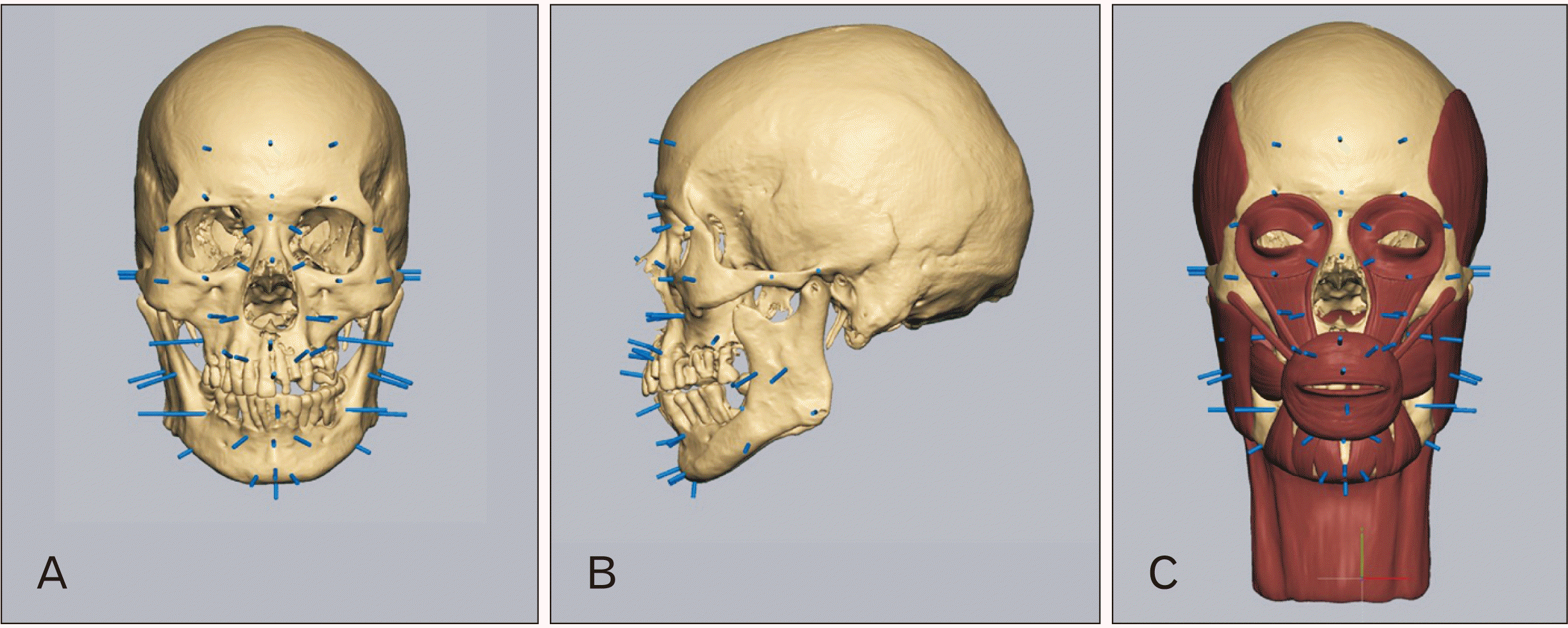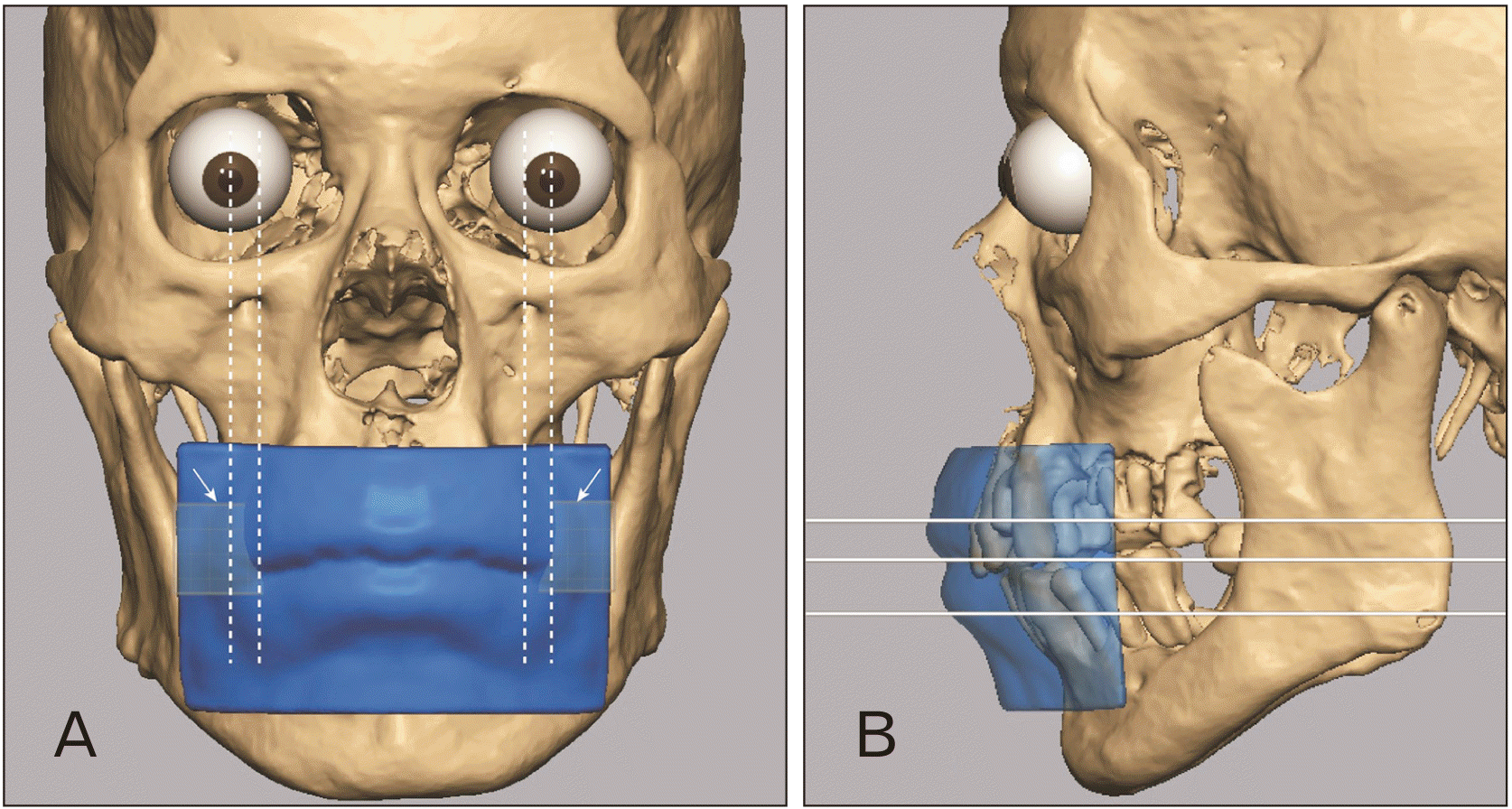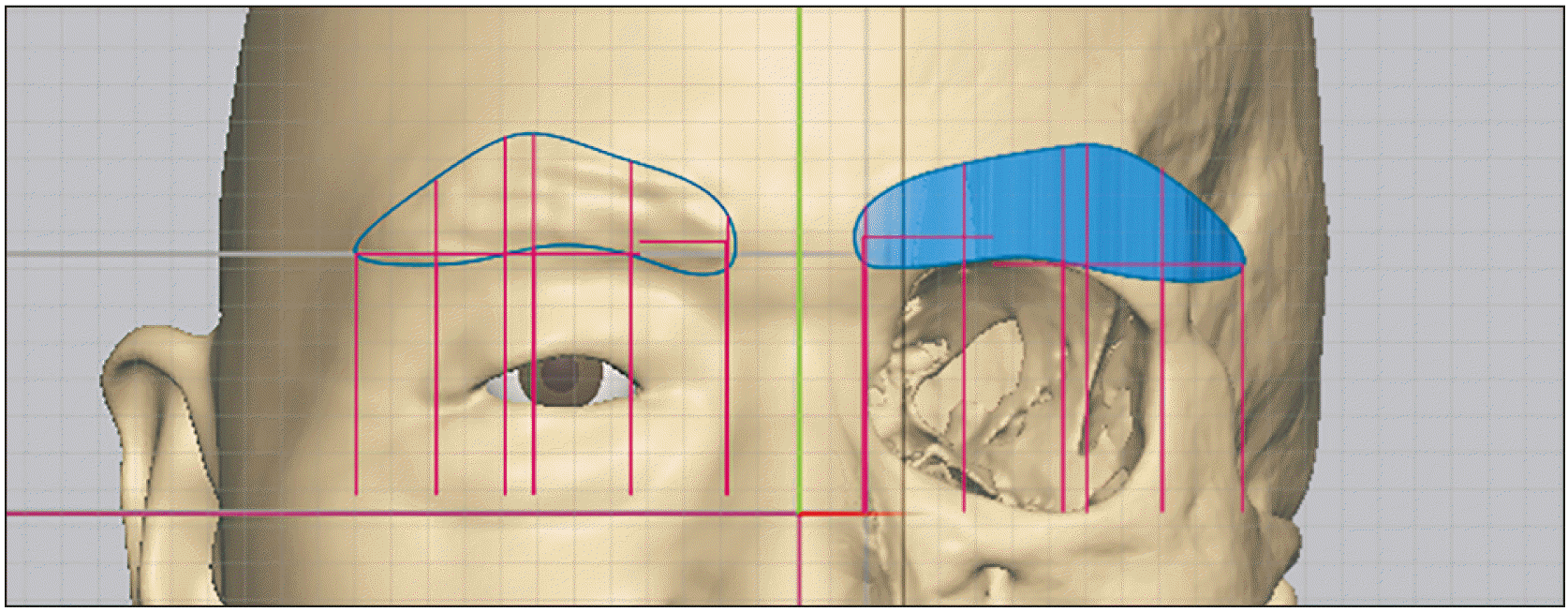Abstract
As a technique mainly hiring in forensic investigation field to identify the descents, craniofacial reconstruction (CFR) is also used in archaeology to create the faces from ancient or medieval human remains, when there is little information about his/her appearance. Eung-Cheok Ko (1531–1605) was a writer and scholar in the mid Joseon period. In January of 2019, His mummified body was found at Gumi, Kyeonsangbuk-do, Korea. The remains were anthropologically examined, and archaeological CFR was also requested for this case. This report reveals the case’s facial reconstruction process and his portrait that is drawn based on the 3-dimensional CFR result.
Craniofacial reconstruction (CFR), a technique to rebuild the ante-mortem facial appearance of the individual, is employed in that very few scientific evidences are remaining to aid the identification of missing people’s remains [1, 2]. CFR becomes also very significant in archaeology of Korea. In brief, during Joseon dynasty period (1392–1897 CE), the facial appearance of respectful officials or scholars were plentifully drawn by contemporary painters. However, as for Korean mummies of Joseon period, there were many cases without any portraits or sculptures remained. When museum curators hoped to get mummified figures’ portrait for public occasions, little information could be available. In that case, portrait drawings must rely on simple imagination or vague reference materials. To overcome this shortcoming, the facial appearance of mummies can be re-created by CFR and the result becomes an ideal reference for drawing authentic portraits of them [3-5]. This idea has been very meaningful in mummy study; however, we admit that it is nothing short of just begun. Actually, authentic achievement cannot be obtained if more experience for drawing mummified people’s portraits based on CFR is not accumulated properly.
Recently, we had a chance to make a CFR-based portrait of Joseon period celebrity who was mummified inside the grave and recently discovered by archaeologists. In January 2019, the grave of Eung-Cheok Ko (1531–1605) was archaeologically investigated at Gumi City (Gyeongsangbuk-do, Korea). He was a famous writer and scholar of the Joseon Dynasty, having passed civil service examination in 1561, and then served as governor of Hoedeok county and Gyeongju city. In his grave, many clothes, cotton blankets, and pillows could be also found in a well-preserved state. The mummy was moved to Seoul National University College of Medicine. Computed tomography (CT) scan was performed with the cooperation of Dankook University Hospital (Cheonan, Korea). While removing the shrouds surrounding the mummy in the lab, the work was suspended due to concerns from descendants who feared damage to their ancestor’s body (Appendix 1). Although the mummy’s face was not exposed to us, the possibility of predicting his face based on the skull recovered from the CT data remains.
The whole CT scan data were uploaded to Geometric Freeform (3D Systems Inc., Rock Hill, SC, USA) for completing a three-dimensional skull model, and positioning the cranium and mandible in conjunction. In this case, the dislocated teeth during post-mortem decomposition (1st left premolar, 2nd left premolar, 1st left molar of mandible) were repositioned to their original positions.
The skull was measured with Materialise Mimics 20.0 (Materialise, Leuven, Belgium), 3-dimensional imaging visualization and analysis program, following the method of Buikstra and Ubelaker [6]. The results are summarized in Appendix 2. In cranial indices, the mummy’s skull was dolichocranial (cranial index: 72.849 mm), orthocranial (length-height index: 73.87 mm), and acrocranial (breath-height index: 101.40 mm). Also, the skull is stenometopic (fronto-parietal index: 65.73 mm) and leptene (upper facial index: 57.98 mm). Nasal index of the skull is mesorrhine. Orbital index is mesoseme in both sides (Table 1, Appendix 3) [7].
Tissue depth pegs (stick markers) were installed to reflect thickness of skin at different locations (n=31) of the skull based on the average skin thickness data of Korean population (Fig. 1) [8]. The fifteen major facial muscles were applied to the skull by their origins and insertions [9], giving an approximate outline of mummy’s face (Fig. 1).
The positions of the eyeballs were predicted using the proportion of the height or breadth of eye orbits. In short, 57.6% of the orbit breadth from the medial point (dacryon) is the center of eyeball in horizontal and 44.1% of the orbit height from the superior point (supraconchion) is the center of eyeball in vertical. 51.3% of orbit height from the deepest point of lateral orbit margin is the most anterior point of the eyeball in lateral. Orbit breadth was measured as between dacryon (medial point) and ectoconchion (lateral point) and orbit height was measured as between supraconchion (superior point) and orbitale (inferior point) (Fig. 2) [10]. The slopes of the eyes in the front view were determined by predicting the combined attachment positions of the medial and lateral palpebral ligaments to the orbits (Fig. 2).
Four sections of each orbit, supraorbitale to orbitale, medial orbit to supraorbitale, lateral orbit to supraobitale and supraorbitale 2 to orbitale, were measured to be used in correlation equations for eyebrow reconstruction. Twelve landmark positions for each side were produced as results predicting the outlines of eyebrows (Fig. 3).
The shape and location of the nose were reconstructed using a study that analyzed the correlation between the nose and the nasal aperture of Koreans. Projection of the nose in side view was calculated by the distance between coronal plane and landmarks, nasion and acanthion. Position of the nasal alae were predicted by the distances between coronal plane and nasal aperture grooves for each side view and between orbitale planes and nasal aperture grooves and midsagittal plane and alares for front view (Fig. 4) [11].
The lip thickness was predicted using the position of the upper and lower incisors [1]. For the width of the lip, several methods were tested using blended of interlimbus distances, the interpupillary distance and the plane method creating planes by both upper canines to find better expression and fit to the skull (Fig. 5).
The height of the ear was predicted by the position of the eyes and nose. The earlobe adherence was predicted using the direction of the mastoid processes [12].
Skin layer was added to the face based on the tissue depth pegs on the skull. After combining the skin layer with each facial components (eyebrows, eyes, nose, lips, and ears), the detailed shape of the face was developed. Skin wrinkles were applied to complete the CFR of the mummy (Fig. 6, Appendix 4).
To add skin texture, skin color, hair, and costume, clay sculpture was transferred to 3D digital software ZBrush (PixologicTM, Los Angeles, CA, USA). The model was painted by Adobe Photoshop (Adobe, San Jose, CA, USA) as in referring Joseon period panting style [13]. For the dress and ornaments in portrait, information on the relevant remains was provided by textile specialists. Eung-Cheok Ko was not wearing the cap or hat inside the grave. However, as the gentry of Joseon dynasty period, we decided to make him wear a common cap in the portrait. The final portrait of Eung-Cheok Ko was drawn in traditional painting style (Fig. 7).
It is of great significance in that creating reliable portraits of historically famous figures can be possible by CFR. In this report, we took a scientifically restored face shape with age and gender into account; and portrait drawing was finally carried out by an artist, referring to the latest historical research updates on Joseon period clothing. In our work, the facial appearance should reflect the fact that Eung-Cheok Ko survived to the age of 74 years. His ears and skin were expressed droopier as they got older, wrinkles were depicted around the eyes, and the age range of this person was expressed with eyebrows and whiskers that looked like a little thin. And we also reflected in the portrait that he was a prominent scholar and a celebrity respected by the people at the time. A headband of Eung-Cheok Ko in the portrait is expressed in a decent arrangement. The top he was wearing was depicted reflecting the style of the man’s coat worn by the scholars at the time. The hat Eung-Cheok Ko wore on his head was drawn by referring to the portrait of Kim Jin (1500–1580) and the existing hat of Seong-ryong Yu (1542–1607). According to the historical literatures, he was a great scholar who studied diligently in his hometown and received considerable respect from people at that time [14]. Therefore, we tried to reflect his admirable personality in historical records when we painted the portrait. In South Korea, since CFR becomes an ideal technique to make historical figures’ portraits or statues more reliable [5, 15], our report can be accepted as a part of continuing efforts to accumulate academic experience indispensable in this task.
Acknowledgements
The authors in this study are deeply grateful to the generous and courageous decision of the Andong Ko clan. They provided us with the opportunity to examine their respectful ancestor. Joon Yeol Ryu, Yeon Kyung Park, and Won Joon Lee were supported by a grant from National Forensic Service (NFS2020MED01), Ministry of the Interior and Safety, Republic of Korea. This work was supported by the National Research Foundation of Korea (NRF) grant funded by the Korea government (MSIT) (No. 2020R1A2C1010708) and Ministry of Education of Korea (2020R1I1A1A01073501).
Notes
Author Contributions
Conceptualization: WJL, DHS. Data acquisition: JYR, AYY, YKP, WJL, EJP, SCC, DY, MJK. Data analysis or interpretation: WJL, MKS, JHH, DHS. Drafting of the manuscript: WJL, JHH, DHS. Critical revision of the manuscript: WJL. Approval of the final version of the manuscript: all authors.
References
1. Wilkinson C. 2004. Forensic facial reconstruction. Cambridge University Press;Cambridge: DOI: 10.1017/CBO9781107340961.
2. Kim SM, Lee WJ, Cho JH, Wilkinson CM, Choi CU, Lee SS. 2020; An investigation of environmental factors influencing quantitative accuracy and recognition rate of craniofacial reconstructions. J Environ Biol. 41:539–48. DOI: 10.22438/jeb/41/3/MRN-1199.
3. Lee IS, Lee EJ, Park JB, Baek SH, Oh CS, Lee SD, Kim YS, Bok GD, Hong JW, Lim DS, Shin MH, Seo M, Shin DH. 2009; Acute traumatic death of a 17th century general based on examination of mummified remains found in Korea. Ann Anat. 191:309–20. DOI: 10.1016/j.aanat.2009.02.006. PMID: 19345566.
4. Shin DH, Lee IS, Kim MJ, Oh CS, Park JB, Bok GD, Yoo DS. 2010; Magnetic resonance imaging performed on a hydrated mummy of medieval Korea. J Anat. 216:329–34. DOI: 10.1111/j.1469-7580.2009.01185.x. PMID: 20070429. PMCID: PMC2829391.
5. Lee WJ, Yoon AY, Song MK, Wilkinson CM, Shin DH. 2014; The archaeological contribution of forensic craniofacial reconstruction to a portrait drawing of a Korean historical figure. J Archaeol Sci. 49:228–36. DOI: 10.1016/j.jas.2014.05.022.
6. Buikstra JE, Ubelaker DH. 1994. Standards for data collection from human skeletal remains. Arkansas Archeological Survey;Fayetteville: DOI: 10.1016/j.jas.2014.05.022.
7. Choi CU, Lee WJ, Park JH. 2020; A study on the Korean orbital and cranial index using 3D skull CT image and morphometric analysis. Anat Biol Anthropol. 33:1–9. DOI: 10.11637/aba.2020.33.1.1.
8. Hwang HS, Park MK, Lee WJ, Cho JH, Kim BK, Wilkinson CM. 2012; Facial soft tissue thickness database for craniofacial reconstruction in Korean adults. J Forensic Sci. 57:1442–7. DOI: 10.1111/j.1556-4029.2012.02192.x. PMID: 22621203.
9. Lee WJ, Wilkinson CM, Hwang HS. 2012; An accuracy assessment of forensic computerized facial reconstruction employing cone-beam computed tomography from live subjects. J Forensic Sci. 57:318–27. DOI: 10.1111/j.1556-4029.2011.01971.x. PMID: 22073932.
10. Guyomarc'h P, Dutailly B, Couture C, Coqueugniot H. 2012; Anatomical placement of the human eyeball in the orbit--validation using CT scans of living adults and prediction for facial approximation. J Forensic Sci. 57:1271–5. DOI: 10.1111/j.1556-4029.2012.02075.x. PMID: 22390613.
11. Ryu JY, Park KS, Kim MJ, Yun JS, Lee UY, Lee SS, Roh BY, Seo JU, Choi CU, Lee WJ. 2020; Craniofacial anthropometric investigation of relationships between the nose and nasal aperture using 3D computed tomography of Korean subjects. Sci Rep. 10:16077. DOI: 10.1038/s41598-020-73127-8. PMID: 32999371. PMCID: PMC7527952.
12. Fedosyutkin BA, Nainys JV. Iscan MY, Helmer RP, editors. 1993. The relationship of skull morphology to facial features. Forensic Analysis of the Skull: Craniofacial Analysis, Reconstruction and Identification. Wiley-Liss;New York: p. 199–213.
13. Cultural Heritage Administration. 2007. Korean fortrait paintings: encountering with people in history. Nulwa;Seoul:
14. Cha SC. 2019. The report of Joseon period grave found at Hapyeong-Myeon, Gemsan-Ri, Gumi city. Seorabeol Institute of Cultural Heritage;Gyeongju:
15. Oh CS, Hong JH, Park JB, Lee WJ, Bianucci R, Piombino-Mascali D, Shin DH. 2018; From excavation site to reburial ground: a standard protocol and related ethics of mummy studies in South Korea. Asian J Paleopathol. 2:1–8. DOI: 10.1007/978-3-319-51726-1_3281-1.
Fig. 1
Tissue depth pegs and facial muscles on the mummy skull. (A) Tissue depth pegs on the skull in the front view. (B) Tissue depth pegs on the skull in the side view. (C) Facial muscles and tissue depth pegs on the skull in the front view.

Fig. 2
Eyeball position in the orbit and eye-opening. (A) Eyeball positioning by the height and breadth of the orbit. (B) Imaginary line linked between medial and lateral palpebral ligament attaching site in the orbit. (C) Eye-opening on the imaginary line.

Fig. 4
Nose reconstruction by the guide of the landmarks. (A) Landmarks’ positions in front view. (B) Nose reconstruction and its’ landmarks in front view. (C) Landmarks’ position in side view. (D) Nose reconstruction and its’ landmarks in side view.

Fig. 5
Lips reconstruction. (A) Lips position in front view. Arrows: maxillary canine contacting planes. Dotted lines: interpupillary and interlimbus lines. (B) Lips position in side view. Solid line: positions of vermilion line and oral fissure.





 PDF
PDF Citation
Citation Print
Print






 XML Download
XML Download